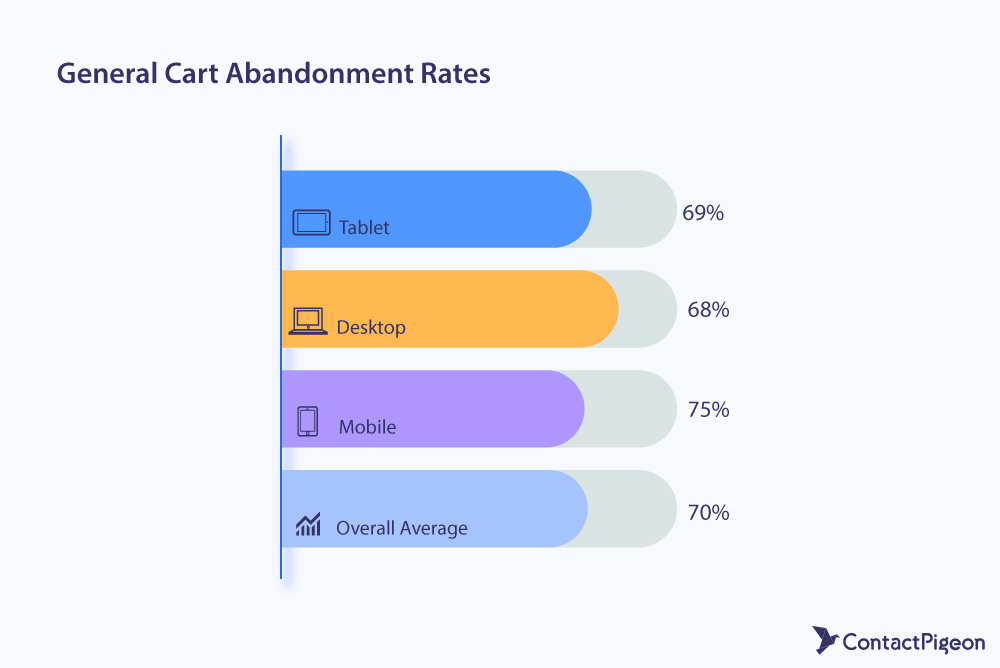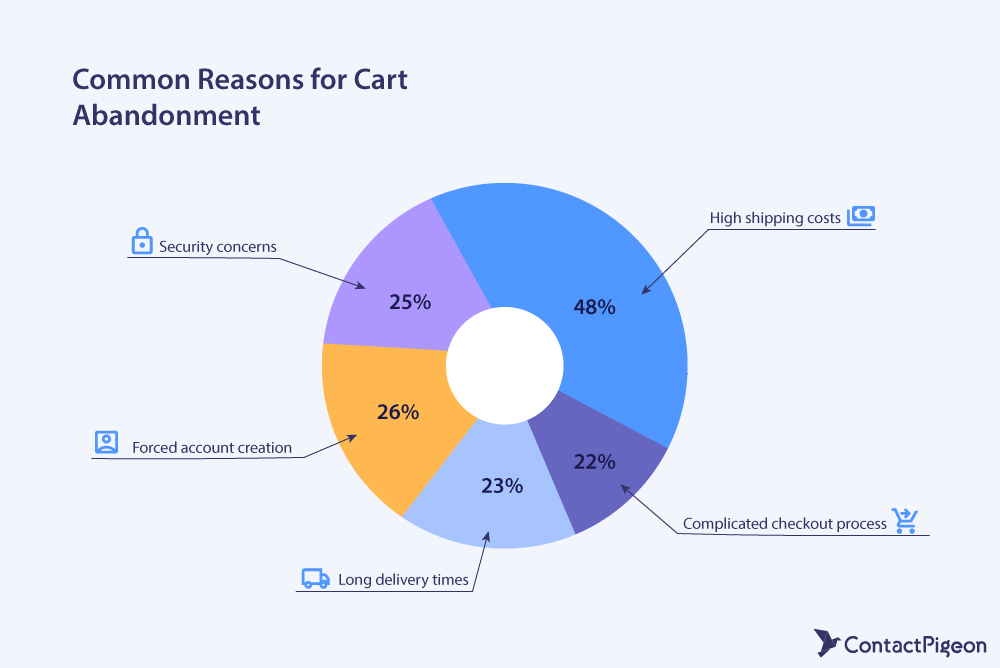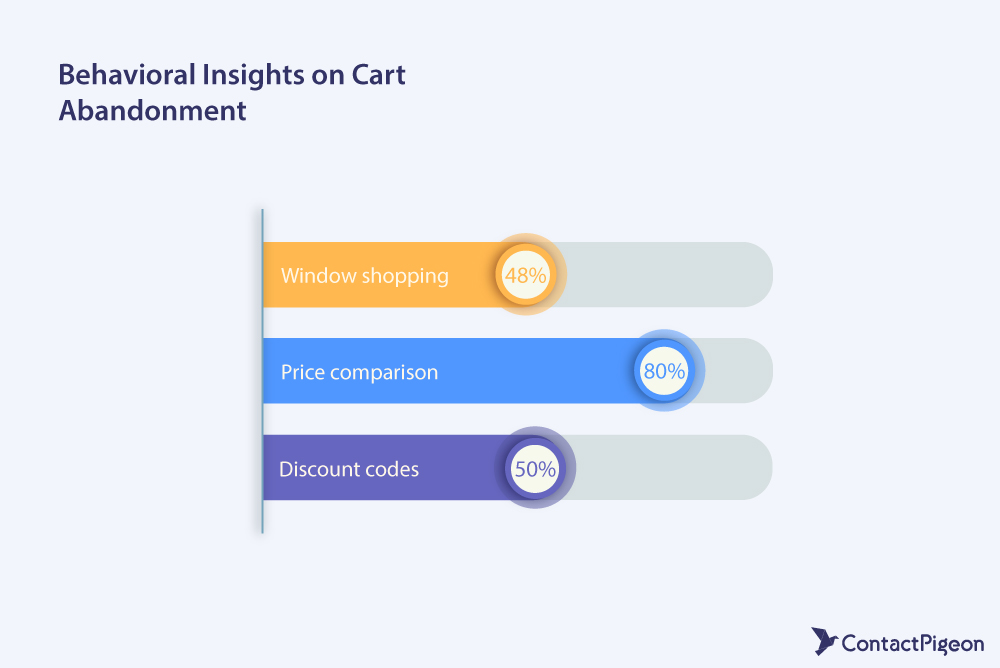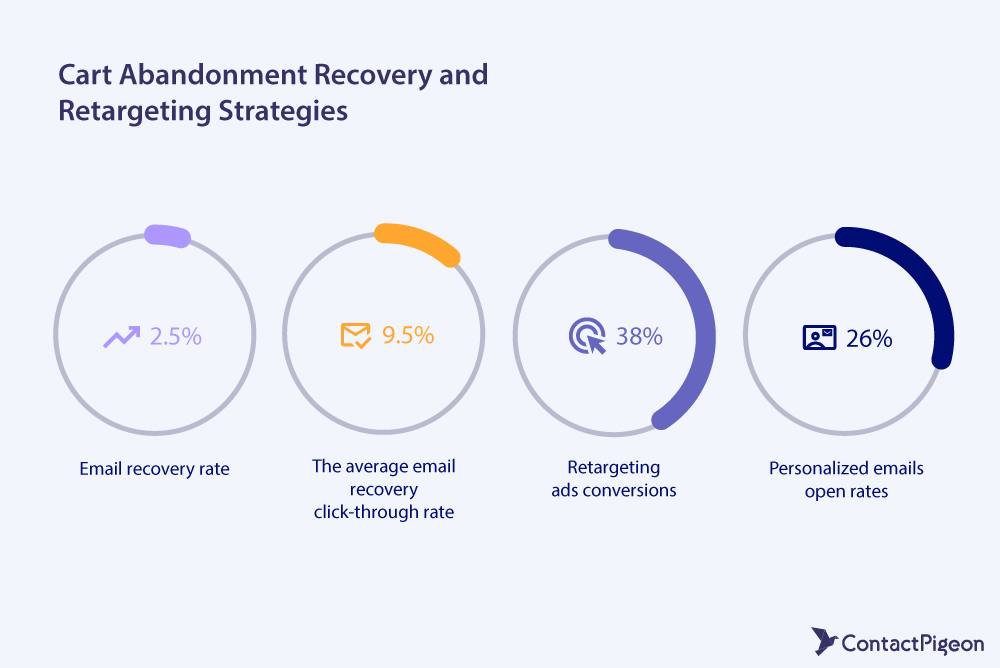On average, most customers shopping on a retailer’s website will not complete a transaction, leading to an estimated $260 billion in lost sales annually. The 2024 cart abandonment stats provide crucial insights into the scale of this issue and the specific reasons why customers abandon their carts before making a purchase. Common factors include complicated checkout processes, unexpected shipping costs, and concerns about payment security.
By understanding and addressing these issues, retailers can significantly improve the user experience. Streamlining the checkout process, offering transparent pricing, and ensuring robust payment security can directly reduce cart abandonment rates. Additionally, incorporating features such as customer reviews, clear return policies, and responsive customer service can further enhance customer satisfaction.
Implementing these strategies not only helps to recover lost revenue but also builds a more loyal customer base. Satisfied customers are more likely to return for future purchases and recommend the retailer to others, driving higher conversion rates and long-term profitability. Leveraging the insights from cart abandonment statistics enables retailers to make data-driven decisions that optimize the shopping experience and foster a stronger, more engaged customer community.
General cart abandonment stats
These top-level cart abandonment stats highlight overall trends in retail. Following, the numbers show that only about 30% of shoppers will leave your site after completing their purchase.

- Average abandonment rate: The average cart abandonment rate across industries is 70.19% (Baymard Institute)
- Cart abandonment is highest when people are shopping with mobile devices, at an average rate of 75.36% (Oberlo)
- The average cart abandonment rate on a desktop is 68.55% (Oberlo)
- On average, 69.03% of tablet users abandon their carts before finishing their purchase (Oberlo)
Industry-specific cart abandonment stats
Shoppers in some industries are more likely to complete their transactions than others. Retailers can benchmark their cart abandonment rates against those by industry to set realistic goals and measure their progress over time. Valuable insights into consumer behavior specific to different markets enable marketers and retailers to tailor their strategies more effectively.
- Retail: The average cart abandonment rate in retail overall is 70.19% (Statista)
- Travel: When booking travel online, over 81.7% of shoppers abandon their carts (Tech Report)
- Fashion: The fashion industry has a comparable average cart abandonment rate as the retail industry overall at 76.03% (Oberlo)
- Grocery: This industry has a lower cart abandonment rate of 50.03% (Statista)
- Luxury goods: The cart abandonment rate for luxury goods was comparable to travel and fashion at 79.04% (Oberlo)
Common reasons

Most people aren’t abandoning their carts because they don’t like the product. According to Baymard Institute cart abandonment stats, most people leave a site without completing their purchase for these reasons:
- High shipping costs: 48% of shoppers will abandon their cart if the shipping, taxes, and fees are too high.
- Long delivery times: 23% of shoppers will abandon their cart if delivery is too slow.
- Complicated checkout process: 22% will not complete a transaction if the checkout process is too complex or too long.
- Forced account creation: More than a quarter (26%) of customers will not complete a purchase if they are forced to make an account.
- Security concerns: 25% of customers don’t trust websites with their credit card information, so they abandon their carts.
Insights on cart abandonment
Cart abandonment isn’t always conscious, as psychological factors can influence a customer’s shopping decisions. Many people will leave a website without psychological cues that build trust in a brand. For example, if a retailer’s website doesn’t have a clear return policy or a customer service phone number, a shopper may decide that the purchase is too risky. In this case, they do not know if they will get their money back. Cart abandonment stats show that other factors play a role in highlighting behavioral factors in why people leave a retail site:
- FOMO (fear of missing out): If a shopper thinks they can get a better deal elsewhere, they’ll leave one site to look for it.
- Anchoring bias: This concept refers to how people tend to weigh the first piece of information they encounter more heavily than supporting information. If a customer’s first encounter with a brand has a high shipping cost, they may be more likely to leave the site.
- Social proof: Customers are more likely to respond to positive ratings and reviews.
Geographical insights
Shoppers in different regions behave differently, which can help a retailer prioritize cart recovery strategies by region.
- North America: In North America, the average cart abandonment rate is 79.14% (Statista)
- Europe: European eCommerce brands see an average cart abandonment rate of 79.28% (Statista)
- Asia & Pacific: The Asia & Pacific region has the lowest cart abandonment rate at 76.32% (Statista)
Device-specific cart abandonment stats
The following statistics provide guidance on how to improve conversions on different devices. Pay attention to site functionality and how it appears on a smartphone or tablet.
- Mobile optimizations: About 31% of people are more likely to fill out a form or take action on a website if their device has a larger screen (Retail Dive)
- Desktop conversion: In eCommerce, desktop conversion rates are ~2.8%, which is higher than tablets and mobile devices (Invesp)
Behavioral insights

People’s online shopping habits do not differ much from their in-person shopping habits. When strolling through a shopping center, many customers will browse and consider multiple items before shopping. They do the same online. Consider these stats:
- Window shopping: A little less than half (48%) of customers left their cart because they were just browsing (Baymard Institute)
- Price comparison: More than 82% of customers said they compare prices online before making a purchase (Statista)
- Discount codes: People often leave a website to find a discount code, and 50% will abandon the transaction if they have a coupon code that doesn’t work (HashtagPaid)
Psychological factors
These statistics highlight how psychological factors influence cart abandonment and outline strategies to influence them.
- Cart abandonment by Millennials: Millennials abandon their carts an average of 4.8 times every 30 days, which is the highest of generations measured (Pymts)
- Complicated processes: Simplifying the checkout process can improve this psychological barrier, and most eCommerce sites can possibly make a 20%-60% reduction in their form elements (Baymard Institute)
- Improve convenience: 15% of abandoned carts come from customers who went to a store to purchase the same item they left in their cart (Fit Small Business)

User experience factors affecting cart abandonment
Improving the user experience on desktop and mobile websites is a great way to lower cart abandonment rates.
- Offering multiple online payment options can increase conversions by up to 30% (LinkedIn)
- Loading speed: Every second a website is delayed can decrease conversions by 20% (Think With Google)
- Generous returns policies: Approximately 16% abandon their purchases if the return policy is unclear or unsatisfactory. Conversely, as many as 66% of shoppers indicate they would spend more if the return policy is generous. (Fit Small Business)
Demographics and cart abandonment rates

Research shows that Millennials tend to be the most fickle shoppers with the highest cart abandonment rates. Before 2020, it could have been attributed to the fact that young people made up the majority of online shoppers. However, post-pandemic about 90% of baby boomers have shopped online.
- Younger shoppers aged 25-34 have the highest abandonment rate at 21% (MobiLoud)
- Shoppers over age 55 had the lowest rates with baby boomers abandoning 0.6 carts in 30 days and Generation X shoppers abandoning 1.9 carts in 30 days (Pymnts). In other words, while older online shoppers tend to make purchases, younger ones are more likely to browse.
Strategies and solutions for reducing cart abandonment
eCommerce businesses can recoup some customers who abandon their carts. According to Baymard Institute’s cart abandonment statistics from 2021, rates are decreasing. eCommerce businesses have begun using various recovery strategies to target shoppers and lure them back in. Here is how it works.
Cart abandonment and payment security
Making payments more secure can help encourage customers to stay on an eCommerce site and complete their transactions. Many customers like to shop with smart wallets on their phones. Implementing this feature and those listed below can help reduce cart abandonment rates.
- Secure payments: 70% of customer feel more comfortable paying with a method that doesn’t ask them to share their financial information (Statista)
- Two-factor authentication: Using two-factor authentication on SMS messages can stop 100% of automated attacks and 96% of phishing attacks (EFTSure)
Technological factors influencing cart abandonment
With new technology, eCommerce companies can more easily attract new customers and retarget those who abandon their carts. With AI, they can easily personalize emails and text messages to retarget customers. They can also prevent cart abandonment with chatbots and other customer service features that allow customers to ask questions in real-time.
- AI and personalization: The global AI in personalization market was worth $1.18 billion in 2023 (Future Data Stats)
- Live chat: Live chat has an average satisfaction rating of 68.3% (Fit Small Business)
Cart abandonment recovery and retargeting strategies

Many retailers are finding different ways to engage people who have abandoned their carts and get them back into the online store. Using tactics such as personalization and text messaging can boost these rates.
- Email recovery rate: Retargeting emails are effective with a recovery conversion rate of 2-3% (Flowium)
- The average email recovery click-through rate is 9.5% (Flowium)
- App retargeting ads can increase conversions by 38% (Exploding Topics)
- Personalized triggered emails increase open rates by 25% and click rates by 51%(Experian)
Impact of shipping and delivery
Shipping is often cited as a reason for abandoning a shopping cart. Retailers who want to attract more shoppers should diversify their shipping options and make sure customers know when to expect their purchases.
- Free shipping: Because 67% of shoppers have abandoned their carts over high shipping costs, free shipping has lowered these rates (Speed Commerce)
- Delivery date display: 41% of websites do not provide a delivery date, meaning customers have to guess when they will receive their items (Baymard Institute)
User reviews
Modern customers want to know what others think of a product before they make a purchase. Since shopping online removes the physical ability to touch and see a product, reviews can help customers visualize the product.
- Negative reviews: If most reviews are negative, 66% of customers will put off buying and 30% leave a brand for the competition (Textmaster)
- Review volume: Product pages featuring 1-10 reviews are 52.2% more likely to convert than those that don’t have any reviews (Power Reviews)
Analysis and impact of cart abandonment
There are multiple analytical aspects of cart abandonment to consider, including insights into checkout processes, financial impacts on a business, and customer feedback. Cart abandonment is also seasonal, with rates increasing at certain times of year. Abandonment rates tend to peak during the holiday shopping season. Knowing these cart abandonment trends in advance can help a retailer prepare to absorb these impacts.
Cart abandonment checkout process statistics

Cart abandonment statistics show that many people will drop out of a sale if the checkout process is too complicated. For retailers who want to lower their abandoned cart rates, simplifying the checkout process is crucial. Tools such as single-page checkout and guest options help make the process faster and easier.
- Single-page checkout: eCommerce businesses using Shopify’s one-page checkout saw a 35% reduction in cart abandonment (Charle Agency)
- Guest checkout: Most customers want to finish their purchase in 4 minutes, and 43% prefer using guest checkout (Capterra)
Financial impact
Retailers across the globe are impacted by cart abandonment, but many of those customers can be lured back in. Consider retargeting ads and emails to bring lost customers back.
- Global revenue loss: Globally, businesses lose $18 billion annually because of abandoned carts (Rakuten Viber)
- Recovered revenue: A third of UK online shoppers will return to a site within a year to make a purchase. (Statista)
Customer feedback on cart abandonment
To help reduce their rates of abandoned carts, retailers can go directly to the source. By sending out customer feedback surveys, they can evaluate which parts of their buying process are most cumbersome and fix them. However, some companies opt to reduce rates by faking social proof.
- Post-abandonment surveys: Sending out a survey post-abandonment offers information into why customers are leaving a website without completing a purchase. However, 50% of customers won’t spend more than 3 minutes on a survey. (Survey Stance)
- Social media: Social media serves as an ideal platform for online reviews, allowing companies to directly respond to users; a feature valued by over 45% of shoppers in Europe. (Statista)
Seasonal trends
Cart abandonment follows seasonal patterns. Although eCommerce sites can expect a spike in shoppers throughout the holiday season, they often see more completed sales. Customers are more likely to finish their transactions when they have a coupon code.
- Holiday season: Cart abandonment is lowest in December at 77%, but it peaks in January at 82%. (Shopify)
- Black Friday and Cyber Monday: For every 10 customers who add items to their basket during Black Friday and Cyber Monday, 8 will abandon their carts before completing the checkout process. (Store Lab)
Build a data-driven cart abandonment optimization strategy
Reducing cart abandonment rates can be achieved through various strategies such as enhancing website usability and mobile responsiveness, utilizing retargeting ads, gathering customer feedback, and improving customer service accessibility. Exploring cart abandonment statistics is enlightening, revealing how individual rates differ by industry, customer loyalty, and engagement.
Retailers can gauge their performance by comparing their rates to industry averages. To calculate the cart abandonment rate, divide the number of completed purchases by the number of carts created, subtract one, and multiply by 100. This KPI is essential for tracking the impact of cart recovery strategies and identifying seasonal trends.
ContactPigeon, an award-winning omnichannel customer engagement solution for major brands across Europe, has helped countless eCommerce clients develop cart recovery strategies to capture lost sales. Book a free 30-minute consultation call today and start a cart abandonment analysis to recover your audience.
Other insightful marketing statistics resources for retailers
- 75 Halloween statistics and facts every retailer should consider
- The 50 most important Mother’s Day statistics for retailers
- Black Friday statistics: The 80 most important stats for retailers
- Retail Customer Engagement Statistics: 55 Stats You Need to Know
- Marketing Automation Statistics for eCommerce
- 56 Christmas Marketing Statistics to Know for This Holiday Season
- Cyber Monday Statistics: 70 Stats Every Retail Executive Should Know
- 50 Father’s Day Statistics No Retailer Should Miss

Let’s Help You Scale Up




![Benchmarking Growth Strategies of Top Fashion Retailers [Study]](https://blog.contactpigeon.com/wp-content/uploads/2025/11/top-fashion-retailers.jpg)
